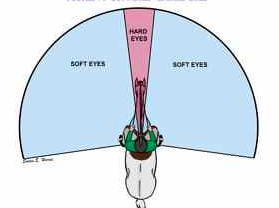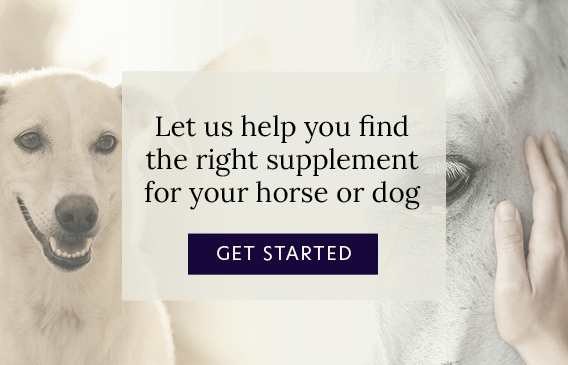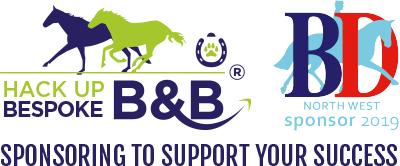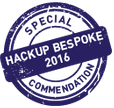

Using 'Soft Eyes' is a technique that will undoubtedly improve your riding AND your marks!!
Sally Swift explains it brilliantly here in her book 'Centred Riding'.
The ability to use 'soft eyes' at will is a special tool in your inventory of riding skills that, when mastered, will alter your instinctive reactions in a way that’s totally productive for your horse’s way of going.
I spent many hours implementing this consciously in all facets of my training and competition riding (both dressage and jumping) in my teens. It’s now instinctive for me and helps me lower my centre of gravity on any horse I ride.
Sally Swift explains it brilliantly……
"Let's experiment with your eyes. First halt your horse. While sitting quietly, focus very intently on one thing, perhaps a letter marker or a certain post or object on the edge of the ring. Keep looking intently at the object. Concentrate on its exact outlines, its shape, density, color. Take everything in acutely. This is the use of what I call hard eyes."
"Now relax your eyes. Let the object be the general center of your gaze, but look at it with your peripheral vision taking in the largest possible expanse, above and below as well as to the left and right."
"Be aware of the whole wide world. Sit comfortably with open eyes and have the feeling of going within yourself as your eyes encompass everything that comes into your field of vision. Remember that you are still aiming at the central object. This is what I call soft eyes."
"What did you see when you looked with hard eyes? Did you see anything besides the object you were looking at? Not if you really focused. What did you see when you were looking with soft eyes? You probably saw at least half the arena even though your general focus was toward one object. When I teach the use of soft eyes, I start by standing in front of riders and then walk a semicircle around them, asking them to tell me when I disappear."
"Standing on that spot, I ask them to look at me. Most are very surprised at how far they must turn their heads to find me. Usually I am standing well behind their shoulders before I disappear. What does this mean to a rider? It means simply that your eyes can give you much greater awareness if you allow them."
"Try another experiment. While walking your horse without stirrups, shift back and forth between hard eyes and soft eyes. Hard eyes are easy to do if you look at your horse's ears. Soft eyes, with your vision very wide and open, are easy to do if you look above his ears out into space. Which way do you suppose it is easier to feel what your horse's back is doing to your seat?"
"You will quickly find that it is much easier to feel this when using soft eyes. The more area you encompass with your eyes, the more you'll be aware of your seat. Glazing or making your eyes fuzzy is not your objective; that would most likely reduce what you feel with your seat."
"When I first started teaching the technique of soft eyes, I had an exciting experience with four girls, good riders, all reaching for their Pony Club B-rating. Working in a small arena, these four girls rode for nearly fifteen minutes with soft eyes, each following her own, varied program, with up and down transitions, circles, turns, serpentines, and changes of direction."
"Not only did they do some superb riding, but during the entire time nobody came near to running into anyone else. Because of the soft eyes, they were constantly aware of where everyone else was and could therefore plan their movements so that each girl worked independently without bothering another."
"Another student of mine was Sarah. When her eight-year-old daughter, Brooke, came home from a hack, Brooke was furious with her pony, who had been totally ill-tempered and uncooperative all the way. She was determined to sell the animal and give up riding."
"Sarah took time to tell Brooke all about the idea of soft eyes. It was like a new kind of game. Then she suggested that Brooke ride her pony to the end of the road and back. Off she went, cantering gaily, then turned and came trotting home all smiles. When Sarah asked Brooke what her body had felt like with soft eyes, Brooke thought a moment, then said excitedly, "Like jelly!" Brooke kept the pony."
"Soft eyes have other applications, too. Well-known event rider Denny Emerson uses them in competition. Just before the stadium jumping phase, he takes two or three minutes to sit quietly on his horse, and, going inside himself with eyes soft, he rides the whole course mentally. Later, during the actual ride, he can then flash back and forth between hard and soft eyes as needed".
"What are the essentials of soft eyes?" - Ride with wide-open eyes and peripheral awareness - Maintain awareness of your entire field of vision. - Allow yourself to feel sensations from within."
"What are the results of soft eyes?"
- Greater field of vision. - Increased awareness of your own and your horse's body. - Fewer tensions - Easier and freer forward movement."
"Useful Imagery."
-Keep your eyes open, looking out ahead - not glazed. -Let your eyes be a tool for awareness -Let your body feel like jelly."
"From this experiment it becomes clear that soft eyes are much more than just a way of looking. Using soft eyes is like a new philosophy. It is a method of becoming distinctly aware of what is going on around you, beneath you, inside of you. It includes feeling and hearing as well as seeing. You are aware of the whole, not just separate parts. Ponder the implications of this technique, this tool. The two ears of your horse are always in front of you, but so many of the important parts are under and behind you, where you cannot see them."













